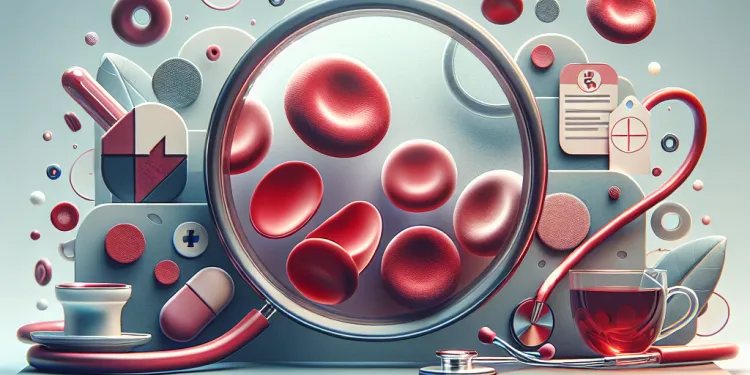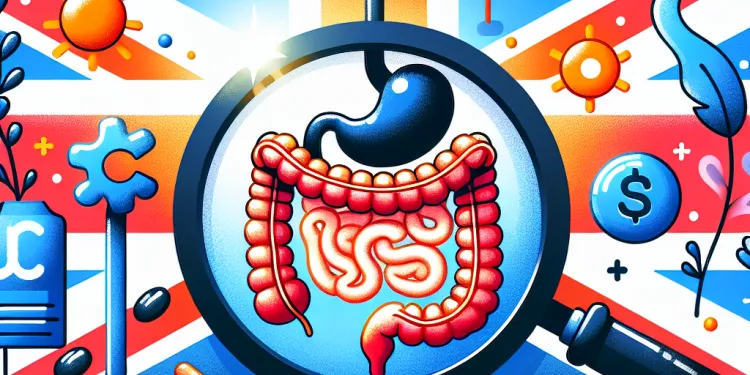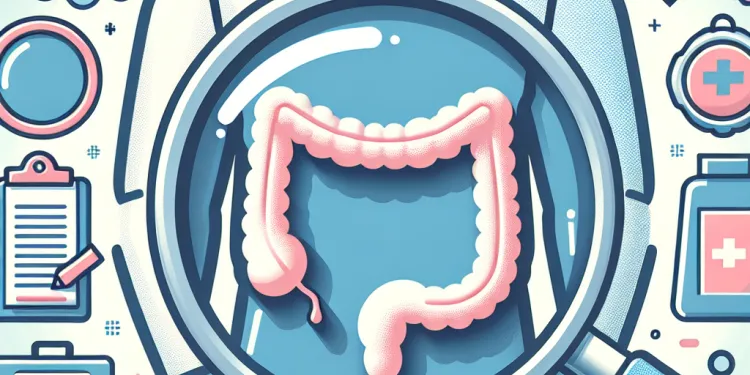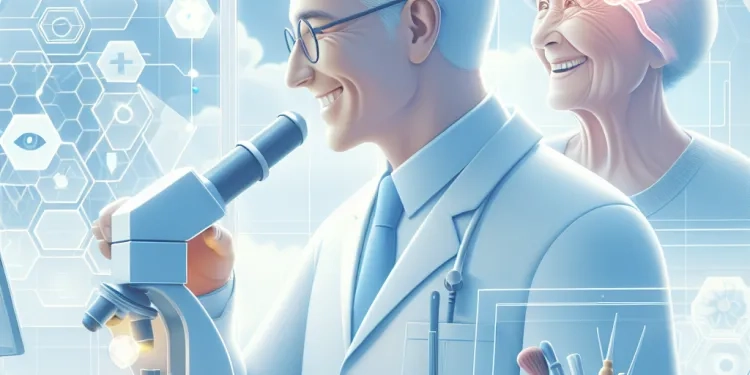Find Help
More Items From Ergsy search
-

What is sickle cell disease?
Relevance: 100%
-

Introduction to Sickle cell disease
Relevance: 99%
-

How is sickle cell disease inherited?
Relevance: 96%
-

How is sickle cell disease diagnosed?
Relevance: 96%
-

What are the symptoms of sickle cell disease?
Relevance: 95%
-

How is sickle cell disease treated?
Relevance: 95%
-

What are the complications of sickle cell disease?
Relevance: 95%
-

Sickle cell anaemia | NHS
Relevance: 82%
-

Tour of the Sickle Cell and Thalassaemia Unit at City Hospital | SCaT
Relevance: 75%
-

Sickle cell patients share their experiences with the last NHS Chief Executive Amanda Pritchard
Relevance: 66%
-

Will I be in a shared or single cell?
Relevance: 36%
-

Why might someone need a blood transfusion?
Relevance: 33%
-

What are some common reasons blood transfusions are needed?
Relevance: 32%
-

What is Mitochondrial disease?
Relevance: 32%
-

When do I find out about my cell assignment?
Relevance: 31%
-

Can Huntington's disease be cured?
Relevance: 29%
-

Is there a cure for motor neurone disease?
Relevance: 28%
-

Anaemia One stop shop
Relevance: 27%
-

What causes Huntington's disease?
Relevance: 26%
-

What research is being done on Huntington's disease?
Relevance: 25%
-

Can Huntington's disease be prevented?
Relevance: 25%
-

Is there a cure for Crohn's disease?
Relevance: 24%
-

Is Crohn's disease contagious?
Relevance: 24%
-

Is motor neurone disease hereditary?
Relevance: 24%
-

Is Huntington's disease fatal?
Relevance: 24%
-

What is Huntington's disease?
Relevance: 23%
-

What causes Alzheimer's disease?
Relevance: 23%
-

How does Huntington's disease affect movement?
Relevance: 23%
-

What causes motor neurone disease?
Relevance: 23%
-

How is Crohn's disease diagnosed?
Relevance: 23%
-

How is Huntington's disease diagnosed?
Relevance: 23%
-

How does Huntington's disease affect emotions?
Relevance: 22%
-

What is Parkinson's disease?
Relevance: 22%
-

Coeliac disease
Relevance: 22%
-

What is Alzheimer's disease?
Relevance: 22%
-

Coeliac Disease: Session 1: What is Coeliac Disease?
Relevance: 22%
-

What role do genetics play in motor neurone disease?
Relevance: 22%
-

Parkinson's disease: Karen's story | NHS
Relevance: 22%
-

Can lifestyle changes help manage Huntington's disease?
Relevance: 22%
-

Can certain medical conditions prevent receiving blood transfusions?
Relevance: 22%
Introduction to Sickle Cell Disease
What is Sickle Cell Disease?
Sickle Cell Disease (SCD) is a group of inherited health conditions that affect the red blood cells. The abnormal red blood cells have a crescent or 'sickle' shape, unlike the typical disc shape. This change in shape can cause blockages in blood flow, leading to serious health issues. Sickle Cell Disease is a lifelong condition that significantly impacts a person’s quality of life.
Prevalence in the United Kingdom
In the United Kingdom, SCD is notably more common among people of African or Caribbean descent. An estimated 15,000 people in the UK are affected by Sickle Cell Disease, making it the nation’s most common genetic blood disorder. Awareness and education about the disease are crucial for early diagnosis and effective management.
Symptoms and Complications
The symptoms and complications of SCD can vary in severity. Common symptoms include episodes of pain called sickle cell crises, fatigue, and anemia. Complications may range from increased risk of infections to stroke, and organ damage. Early diagnosis through newborn screening programs helps in better managing the condition.
Treatment and Management
Although there is no universal cure for Sickle Cell Disease, various treatments can help manage and alleviate symptoms. Options include pain relief during crises, blood transfusions, and medications such as hydroxyurea. Bone marrow and stem cell transplants can potentially cure the condition but carry significant risks and are not suitable for everyone.
Living with Sickle Cell Disease
Living with SCD requires ongoing medical care and lifestyle adjustments. Regular health check-ups, a balanced diet, staying hydrated, and avoiding extreme temperatures are crucial for managing the condition. Support from healthcare professionals, family, and patient support groups can play a vital role in improving the quality of life for those affected by SCD.
Introduction to Sickle Cell Disease
What is Sickle Cell Disease?
Sickle Cell Disease is a health problem you are born with. It affects the red blood cells in your body. These cells are usually round, but in this illness, they are shaped like a crescent moon or "sickle." This shape can block blood flow and make you very sick. Sickle Cell Disease lasts your whole life and can make life harder.
Prevalence in the United Kingdom
Sickle Cell Disease is more common in people from Africa or the Caribbean. In the UK, about 15,000 people have it, making it the most common genetic blood problem. Knowing about the disease helps find it early and manage it better.
Symptoms and Complications
The signs of Sickle Cell Disease can be different for each person. Common signs are pain attacks called sickle cell crises, feeling very tired, and having low energy (anemia). It can also lead to other problems like infections, strokes, and organ damage. Testing babies at birth helps doctors treat the disease sooner.
Treatment and Management
There is no simple cure for Sickle Cell Disease, but treatments can help with the symptoms. Treatments include pain relief, blood transfusions, and medicines like hydroxyurea. Sometimes, bone marrow and stem cell transplants can cure it, but they have risks and do not work for everyone.
Living with Sickle Cell Disease
People with Sickle Cell Disease need regular medical care and changes in their daily life. It is important to have regular check-ups, eat healthy, drink plenty of water, and avoid very hot or cold weather. Support from doctors, family, and groups helps improve life for people with Sickle Cell Disease.
Frequently Asked Questions
What is sickle cell disease?
Sickle cell disease (SCD) is a genetic blood disorder that affects the shape of red blood cells, causing them to become rigid and form a crescent or 'sickle' shape, which can lead to various health complications.
How is sickle cell disease inherited?
Sickle cell disease is inherited in an autosomal recessive pattern, meaning a child must inherit two sickle cell genes, one from each parent. If one parent has sickle cell trait (one sickle cell gene), the child may inherit the trait but not the disease.
What are the symptoms of sickle cell disease?
Common symptoms of sickle cell disease include episodes of pain (known as sickle cell crises), fatigue, jaundice, swelling in the hands and feet, and frequent infections.
How is sickle cell disease diagnosed?
Sickle cell disease is typically diagnosed through a blood test. In the United Kingdom, newborns are routinely screened for SCD as part of the Newborn Blood Spot Screening Programme.
What are the complications of sickle cell disease?
Complications can include severe pain, anemia, infections, stroke, organ damage, acute chest syndrome, and vision problems.
How is sickle cell disease treated?
Treatment may include pain management, blood transfusions, medications like hydroxyurea, and sometimes bone marrow or stem cell transplants. Management of SCD also involves regular medical checkups and vaccinations.
Can sickle cell disease be cured?
The only potential cure for sickle cell disease is a bone marrow or stem cell transplant, but it is not an option for everyone due to the associated risks and the difficulty of finding a suitable donor.
What lifestyle changes can help manage sickle cell disease?
Staying hydrated, avoiding extreme temperatures, maintaining a healthy diet, managing stress, and avoiding high-altitude areas can help manage sickle cell disease.
What is the life expectancy for someone with sickle cell disease?
With proper management and medical care, individuals with sickle cell disease can live into their 40s, 50s, or beyond, although life expectancy varies widely.
Is there a difference between sickle cell disease and sickle cell trait?
Yes, sickle cell trait means carrying one sickle cell gene and one normal gene, typically without symptoms, while sickle cell disease means having two sickle cell genes, leading to significant health issues.
How common is sickle cell disease in the United Kingdom?
Sickle cell disease is the most common genetic disorder in the UK, with over 15,000 people affected and a high prevalence in individuals of African or Caribbean descent.
What is a sickle cell crisis?
A sickle cell crisis is a pain episode caused by blocked blood flow due to sickle-shaped cells clumping together. It can cause severe pain and require medical treatment.
Are there any support groups for individuals with sickle cell disease in the UK?
Yes, organisations such as the Sickle Cell Society provide resources, support, and advocacy for people affected by sickle cell disease in the United Kingdom.
Can sickle cell disease affect pregnancy?
Yes, women with sickle cell disease can have high-risk pregnancies and may face complications like preterm labour and infection, requiring special medical care.
Is newborn screening for sickle cell disease mandatory in the UK?
Yes, all newborns in the UK are offered screening for sickle cell disease as part of the NHS Newborn Blood Spot Screening Programme.
What is sickle cell disease?
Sickle cell disease is when red blood cells are shaped like a sickle (a curved farm tool) instead of round. This can make it hard for blood to travel around the body properly.
People with sickle cell disease might feel tired or in pain sometimes.
If you have sickle cell disease, it's important to talk to a doctor. They can help you manage it and stay healthy. Drawing pictures, using colors, or watching videos can help you understand it better.
Sickle cell disease is a blood problem you are born with. It makes red blood cells change shape. They look like a 'C' or a 'sickle'. This can cause health problems.
If you find reading hard, try asking someone to read with you. You can also use audiobooks or reading apps. They can help make it easier to understand the information.
How do people get sickle cell disease from their parents?
Sickle cell disease is passed down from parents to children. It happens when a child gets a sickle cell gene from both the mum and the dad. If only one parent has the sickle cell trait, the child might get the trait, but won't have the disease.
What problems can sickle cell disease cause?
Sickle cell disease can make you feel very tired and in a lot of pain. It can make your hands and feet swell up. It can also cause problems with your eyes and make it hard to see clearly.
People with sickle cell can get infections more easily. They might feel out of breath or have trouble breathing.
If you or someone you know has these problems, it's important to see a doctor.
Helpful tip: A picture book or model can help you understand more about sickle cell disease.
If you have sickle cell disease, you might feel some of these signs:
- You can have times when you feel a lot of pain. This is called a sickle cell crisis.
- You might feel very tired.
- Your skin or eyes can look yellow. This is called jaundice.
- Your hands and feet might get swollen.
- You might get sick a lot with infections.
Using tools like picture charts or speaking to someone who can explain things in a simple way can help you understand better.
How do doctors find out if someone has sickle cell disease?
Doctors can do a blood test. They take a little bit of blood and look at it. This helps them see if the red blood cells are the wrong shape.
If you think someone might have sickle cell disease, it is important to talk to a doctor or nurse. They can help you with the right tests and answers.
Using pictures or simple diagrams can be helpful to understand how the test works.
Doctors can find out if someone has sickle cell disease by doing a blood test. In the United Kingdom, all babies get a special blood test when they are born to check for sickle cell disease.
What problems can happen with sickle cell disease?
Problems can happen and they might cause:
- Bad pain
- Low iron in the blood
- Getting sick more easily
- Stroke (bad problem with the brain)
- Damage to body parts
- Breathing problems
- Trouble seeing
Using simple tools like picture charts, or listening to stories can help you understand better!
How do doctors help people with sickle cell disease?
Doctors help people with sickle cell disease in different ways. Here are some things they do:
- Medicines: Doctors give medicines to help with pain and to stop people from getting infections.
- Hydroxyurea: This medicine can help make sickle cell less serious for some people.
- Blood transfusions: Sometimes, doctors give new blood to people. This can give them healthy red blood cells.
- Healthy habits: Drink a lot of water and eat good food. This can help people feel better.
- Regular check-ups: It is important to visit the doctor regularly to stay healthy.
Tools and tips can include:
- Using a planner to remember medicine times.
- Carrying a water bottle to drink more often.
Treatment can help you feel better. You might get help for pain, need more blood, or take medicine like hydroxyurea. Sometimes, doctors might do special treatments like giving you new healthy blood cells. It's also important to see the doctor often and get vaccines.
Can doctors make sickle cell disease go away?
Sickle cell disease is a sickness of the blood. It can make you feel tired and hurt. Doctors are trying to find a way to make this sickness go away forever.
Right now, there is a special treatment called a bone marrow transplant that can help some people. But it doesn't work for everyone and can be very hard to do.
Scientists are working on new treatments. These treatments might help more people in the future.
If you have sickle cell disease, talk to a doctor. They can tell you what treatments might help you feel better.
You can use things like picture books or videos to help understand more.
The only way to cure sickle cell disease is with a special treatment called a bone marrow or stem cell transplant. But this is not for everyone. It can be risky and hard to find the right person to donate.
What can you do to help with sickle cell disease?
Drink lots of water, stay away from very hot or very cold places, eat healthy food, try to stay calm and happy, and do not go to places that are high up in the mountains. These things can help you feel better if you have sickle cell disease.
How long do people with sickle cell disease live?
People with sickle cell disease can live for a long time, but they may have more health problems.
Doctors help them feel better with special care and check-ups.
Some tools can help, like using a calendar to remember doctor visits or taking medicine.
With good care from doctors, people with sickle cell disease can live into their 40s, 50s, or even longer. But how long they live can be different for each person.
What is the difference between sickle cell disease and sickle cell trait?
Sickle cell disease and sickle cell trait are not the same. Let me explain:
- Sickle cell disease: This means a person has a serious problem with their blood. Their red blood cells are shaped like sickles (like a banana). This can make them feel very sick and tired.
- Sickle cell trait: This means a person carries the gene for sickle cell, but they usually do not feel sick. They can pass the gene to their children.
Helpful tip: Using colored pictures and simple diagrams can help you understand more about sickle cell. Talking to a doctor or a nurse can also help.
If you have sickle cell trait, it means you have one sickle cell gene and one normal gene. Usually, this doesn’t cause any problems. If you have sickle cell disease, it means you have two sickle cell genes. This can cause big health problems.
How many people have sickle cell disease in the United Kingdom?
Sickle cell disease is a problem with the blood. It changes the shape of red blood cells.
Some people in the United Kingdom have this disease. It is not very common, but some families have it more than others.
If you want to know more, you can ask a doctor or nurse. Reading stories or watching videos about sickle cell can also help you learn.
Sickle cell disease is a blood disorder that you're born with. It is the most common one like this in the UK. More than 15,000 people have it. It mostly affects people from African or Caribbean backgrounds.
What is a sickle cell crisis?
A sickle cell crisis happens when sickle-shaped blood cells block blood flow. This can cause bad pain.
If you or someone you know has a sickle cell crisis, it is important to tell a doctor right away.
Using tools like pictures or talking apps can help you understand more. You can also ask someone you trust to explain it to you.
A sickle cell crisis is when someone has a lot of pain because their blood can't flow properly. This happens because some blood cells are shaped like sickles and they get stuck together. It can hurt a lot and you might need to see a doctor.
Is there help for people with sickle cell disease in the UK?
Can people with sickle cell meet others with the same condition?
Yes, there are groups in the UK.
Groups help people talk and share feelings.
People learn from each other in these groups.
Ask your doctor or nurse for group details.
Yes, groups like the Sickle Cell Society help people with sickle cell disease in the UK. They give information, support, and speak up for those with the disease.
How does sickle cell disease affect pregnancy?
Sickle cell disease is when blood cells are shaped like a sickle. This can make you feel sick or tired.
If you have sickle cell disease and are pregnant, it is important to see a doctor regularly. The doctor can help make sure you and the baby are okay.
Here are some things that might help:
- Ask your family or friends for support.
- Join a group where people talk about sickle cell disease and pregnancy.
- Use pictures or videos to learn more.
If you need help reading or understanding, ask someone you trust to explain it to you.
Yes, women with sickle cell disease might have special pregnancies. This can mean they face problems like having their baby early or getting an infection. They need special care from doctors.
Do all newborn babies in the UK get checked for sickle cell disease?
Yes, in the UK, all newborn babies are tested for sickle cell disease. This test is part of a standard health check. It helps doctors find and treat the disease early.
If understanding is hard, try these tips:
- Ask someone to read with you.
- Break the text into smaller parts.
- Use a dictionary to explain hard words.
Yes, in the UK, all new babies get a test for sickle cell disease. This is part of a health check called the NHS Newborn Blood Spot Screening Programme.
Useful Links
- Ergsy carfully checks the information in the videos we provide here.
- Videos shown by Youtube after a video has completed, have NOT been reviewed by ERGSY.
- To view, click the arrow in centre of video.
- Most of the videos you find here will have subtitles and/or closed captions available.
- You may need to turn these on, and choose your preferred language.
- Go to the video you'd like to watch.
- If closed captions (CC) are available, settings will be visible on the bottom right of the video player.
- To turn on Captions, click settings .
- To turn off Captions, click settings again.
More Items From Ergsy search
-

What is sickle cell disease?
Relevance: 100%
-

Introduction to Sickle cell disease
Relevance: 99%
-

How is sickle cell disease inherited?
Relevance: 96%
-

How is sickle cell disease diagnosed?
Relevance: 96%
-

What are the symptoms of sickle cell disease?
Relevance: 95%
-

How is sickle cell disease treated?
Relevance: 95%
-

What are the complications of sickle cell disease?
Relevance: 95%
-

Sickle cell anaemia | NHS
Relevance: 82%
-

Tour of the Sickle Cell and Thalassaemia Unit at City Hospital | SCaT
Relevance: 75%
-

Sickle cell patients share their experiences with the last NHS Chief Executive Amanda Pritchard
Relevance: 66%
-

Will I be in a shared or single cell?
Relevance: 36%
-

Why might someone need a blood transfusion?
Relevance: 33%
-

What are some common reasons blood transfusions are needed?
Relevance: 32%
-

What is Mitochondrial disease?
Relevance: 32%
-

When do I find out about my cell assignment?
Relevance: 31%
-

Can Huntington's disease be cured?
Relevance: 29%
-

Is there a cure for motor neurone disease?
Relevance: 28%
-

Anaemia One stop shop
Relevance: 27%
-

What causes Huntington's disease?
Relevance: 26%
-

What research is being done on Huntington's disease?
Relevance: 25%
-

Can Huntington's disease be prevented?
Relevance: 25%
-

Is there a cure for Crohn's disease?
Relevance: 24%
-

Is Crohn's disease contagious?
Relevance: 24%
-

Is motor neurone disease hereditary?
Relevance: 24%
-

Is Huntington's disease fatal?
Relevance: 24%
-

What is Huntington's disease?
Relevance: 23%
-

What causes Alzheimer's disease?
Relevance: 23%
-

How does Huntington's disease affect movement?
Relevance: 23%
-

What causes motor neurone disease?
Relevance: 23%
-

How is Crohn's disease diagnosed?
Relevance: 23%
-

How is Huntington's disease diagnosed?
Relevance: 23%
-

How does Huntington's disease affect emotions?
Relevance: 22%
-

What is Parkinson's disease?
Relevance: 22%
-

Coeliac disease
Relevance: 22%
-

What is Alzheimer's disease?
Relevance: 22%
-

Coeliac Disease: Session 1: What is Coeliac Disease?
Relevance: 22%
-

What role do genetics play in motor neurone disease?
Relevance: 22%
-

Parkinson's disease: Karen's story | NHS
Relevance: 22%
-

Can lifestyle changes help manage Huntington's disease?
Relevance: 22%
-

Can certain medical conditions prevent receiving blood transfusions?
Relevance: 22%


